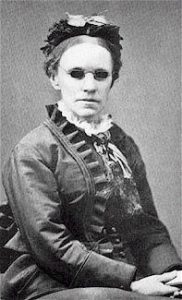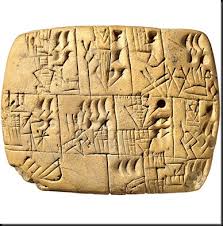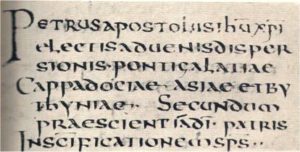I don’t write about politics much, because it’s a trap. It’s too easy to see your own “side” as the good guys and the other side as mendacious maniacs (or pick your own alliteration). Worse, it’s too easy to hunker down in the mosh pit and convince yourself that this is the good fight: this bill before Congress, this election, this next Supreme Court Justice. There may certainly be elements of a good fight in any of these, but the real fight is taking place on another level altogether.
Having said that, I’m going to make a political observation. The Democrat party, as a whole (not convicting all Democrats) seems to have sunk their fortunes into a grab bag of propositions that can be lumped together under the heading of “Identity Politics”—IP for short. IP weaves the academic pursuits of latter-day Marxism, deconstructionism and intersectionality among strands of feminism, Black Lives Matter, LGBTQ identity, and other aggrieved groups who haven’t even worked up to being aggrieved yet. Its policies lean toward statist solutions (i.e., big government; welfare; socialist tendencies). In the interests of bipartisanship, I agree that IP would never have taken hold without some justification. Forms of oppression has tainted our country, and injustice lingers on. I disagree about causes and solutions, and I strenuously disagree that oppression is the whole story. But that’s the problem: to many on the far side of IP, oppression is the whole story.
Identity Politics has become a cult. Its sacred history is a catalogue of oppression by white men, its eschatology is the emasculation of white men, its creed is White Men Are Oppressors, and its high priesthood is the Democrat leadership—many of whom are white men, redeemed by sacred rhetoric. Its high religious festivals are elections, both general and mid-term; its ethic is protest and resistance; its holy relics include abortion (as a symbol of a woman’s control over her destiny).
Cults have their heroes and villains and sacrificial victims. Last week we witnessed a ritual sacrifice, complete with ceremony, theater, laying on guilt, and one “lamb without blemish.”
Let me say at the outset, I don’t know the facts of the Ford-Kavanaugh case. Nobody does, except the accused and the accuser, and possibly not even those two, given the tricks that memory plays over time. But adherents of the cult were presented with the perfect victim: not only white and male, but a preppie! Not just privileged, but super-privileged! Not merely a boy scout, but a devout Catholic! Not just innocent of the charge (so he claims), but a virgin at the time! (So he claims.) Everything that radical leftism hates and longs to pull down was sitting before them in that committee room, and they knifed him.
He had his defenders, and won a procedural victory when the Senate Judicial Committee voted him out on strict party lines. But he’s bleeding, and if he makes it to the Supreme Court, he’ll bleed for the next decade at least (if not impeached by a Democrat majority). The cult has worked itself into an ideological frenzy on the merest suggestion. Among the accusations and conclusions I’ve encountered: he was probably drunk at the hearing, he falls into seething rages, he can’t be trusted to coach his daughter’s basketball team, he may have run a high-school rape ring, he got blind drunk at parties in college and there’s just no telling what he did or can do.
I’ve bumped into these allegations without even looking for them; just imagine what I’d find at fever swamps like Think Progress and Democrat Underground. They came not from anonymous angry birds on Twitter, but from mainstream journalists and pundits and authors. Brett Kavanaugh is no longer a man to them—he was never a man, but a symbol of white supremacy in all its wickedness. He’s the merciless slave-owner, the callous CEO, the ogre of the boardroom, the . . . the . . Republican.

This cartoon was making the rounds over the weekend: Lady Justice, her scales knocked askew, flat on her back, held down with one hand over her mouth by a faceless attacker labeled “GOP.” Yeah, well—what about assumption of guilt, and lack of evidence, and equality under the law, which is why justice is supposed to be blind? To the IP faithful, “procedure” means “stonewalling.” What do they want? A conviction! When do they want it? Now!! And they’ve got it. In another age, they would be yelling, “To the guillotine!”—so we can be grateful for the procedural niceties that remain to us.

Just consider these cartoons, presented from opposite sides of the story. Which has the most emotional punch? Which has the most rational appeal? Can there be any reconciliation between these two views?
“But love your enemies and pray for those who persecute you, so that you may be sons of your Father who is in heaven.” The great reconciler is at work, but he only works through one heart at a time. Views aren’t reconcilable, but people are.








 past to encourage us. Though they are dead, yet they speak (see Hebrews 11:4). We can’t hear George Whitefield or Charles Spurgeon or Jonathan Edwards preach, but we can hear Charles Wesley, John Newton, and Martin Luther through the songs they wrote. Singing connects us to the flow of church history and the work of the Holy Spirit in every age. We don’t just hear about that history—we hear it, in the songs we sing.
past to encourage us. Though they are dead, yet they speak (see Hebrews 11:4). We can’t hear George Whitefield or Charles Spurgeon or Jonathan Edwards preach, but we can hear Charles Wesley, John Newton, and Martin Luther through the songs they wrote. Singing connects us to the flow of church history and the work of the Holy Spirit in every age. We don’t just hear about that history—we hear it, in the songs we sing.



 It was the same in the towns they came from: church was the heartbeat of every community, where births were recorded, marriages performed, and funerals preached. The building with the steeple also served as an assembly hall for political and social gatherings, such as the weekly “sing.” Almost everyone sang, for worship and for fun, both secular and sacred, Sundays and Wednesdays and days in between.
It was the same in the towns they came from: church was the heartbeat of every community, where births were recorded, marriages performed, and funerals preached. The building with the steeple also served as an assembly hall for political and social gatherings, such as the weekly “sing.” Almost everyone sang, for worship and for fun, both secular and sacred, Sundays and Wednesdays and days in between.
 adaptations to basic chords strummed on a guitar. We loved “Day by Day” and “Prepare the Way of the Lord” (from the musical Godspell) and songs about fellowship and community. “They’ll Know We Are Christians by Our Love”—can you hear that one in your head right now?
adaptations to basic chords strummed on a guitar. We loved “Day by Day” and “Prepare the Way of the Lord” (from the musical Godspell) and songs about fellowship and community. “They’ll Know We Are Christians by Our Love”—can you hear that one in your head right now?





